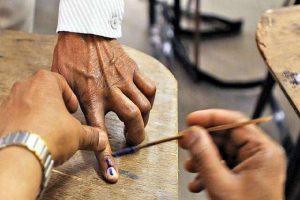The furore over the recent arrest of the cartoonist Bala in Tamil Nadu for critiquing the chief minister, the police commissioner and the collector, it seems, went a little overboard. However, the arrest of the cartoonist, Aseem Trivedi, on charges of sedition some years ago was the exposure of an embarrassing tendency of Indian institutions to clamp down on criticism. Worse even those in authority who pounce on criticism in a cartoonist’s humour, hardly realise that this love of repression is contrary to the democratic principle of freedom of speech.
However, there is no denying that in some cases, the cartoonist’s humour is nothing but an act of aggression. Sometimes it can be really devastating, and instead of producing laughter, it occasions anguish or even trauma.
Six years after the NCERT’s political science textbook, “Indian Constitution at Work”, was introduced in Class XI syllabus, it was vetted by a panel of distinguished academics in 2012. The reason was that a Shankar cartoon that showed Nehru cracking the whip on Dr BR Ambedkar for delaying the Constitution was included in the text. The cartoon drawn in 1949 was found offensive by those who saw themselves as admirers of Ambedkar. In fact, for all its subtlety, the visual could have been avoided without in any way belittling the worth of the text because it was written for students of an impressionable age.
Advertisement
Moreover, there was no point in conveying any lesson to Class XI students through a caricature of Ambedkar. The pupils with tender minds should rather have been taught how Dr Ambedkar had worked strenuously to frame the Constitution. The other objectionable message of the piece might have been that Dr Ambedkar worked at a snail’s pace, as he was shown sitting on a snail.
It is sometimes hazardous to use cartoons to illustrate historical events. In 1949, when the cartoon was drawn, Shankar’s icon, Nehru, was depicted as rushing about on a white horse in 1929, calling for Poorna Swaraj in Lahore, or dashing up the stairs into aeroplanes. Here was a man in a hurry getting increasingly impatient for change and bored with bureaucratic formalities.
There have been cartoons on political personalities like Rajiv Gandhi, P V Narasimha Rao, Atal Behari Bajpayee, LK Advani and Manmohan Singh. Kutty, one of India’s leading political cartoonists, practised his art on PC Sen, Atulya Ghosh and even Jyoti Basu. In 1999, Jyoti Basu ordered the arrest of someone who had posted nasty things about him and his son. Social networking sites have also quite enthusiastically featured spoofs picturing Mamata Banerjee, Sonia Gandhi, Anna Hazare et al.
A few years ago, a professor of Kolkata was arrested for circulating a picture spoof of the chief minister of West Bengal. In 2011, cartoonist Harish Yadav was arrested for drawing a cartoon in “Prabhat Kiran” showing Narendra Modi. During Emergency, one could recall how anti-Congress sentiments bloomed on the walls of West Bengal.
In the global context, the cartoon with Sir Robert Walpole, the famous Whig leader, as the subject titled “Idol Worship or the Way to Preferment” was much discussed; it depicted a servile place-seeker kissing his enormous butt. During the eighteenth century, English caricaturists enjoyed depicting politicians while urinating and defecating. However, the most outrageous cartoon was a post-coital Adolf Hitler in bed with Anne Frank. In Denmark, the offensive cartoons against Prophet Mohammad were printed by the media which elicited widespread outcry.
Art follows life. The mad, mad world of cartoonists has since long imbued their fans with a sense of humour. Through thick and thin they have made their viewers live by their wit. Sense and nonsense, parody and satire have co-mingled to give the admirers a reason for living. Everything vanished; the smile remains. With the advent of the printing press, books and newspapers have taken the task of witty and sarcastic remarks and commentaries. The coming of Internet has served to share everything with the click of a mouse.
A cartoonist is an artist with a printed message. There is nothing excessive in directing satire against corruption in the circles of power that the artist should be labelled even seditious. Well be it bad enough to indulge in bad taste to evoke a sense of humour, but what is perhaps worse is the use of stern legal action for matters that have nothing to do with serious crime.
Nehru quipped while launching Shankar’s Weekly, “Don’t spare me, Shankar”.










